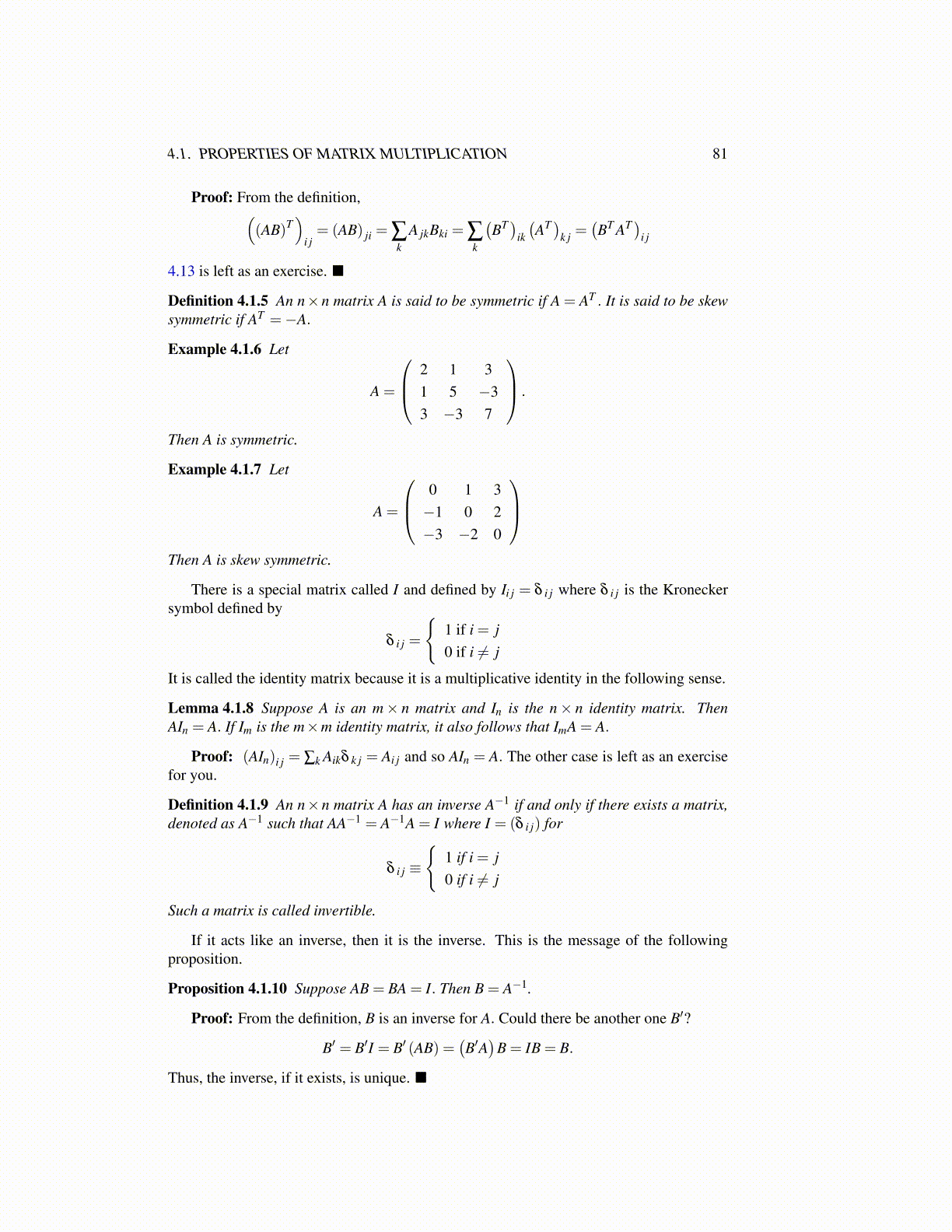
4.1. PROPERTIES OF MATRIX MULTIPLICATION 81
Proof: From the definition,((AB)T
)i j= (AB) ji = ∑
kA jkBki = ∑
k
(BT )
ik
(AT )
k j =(BT AT )
i j
4.13 is left as an exercise. ■
Definition 4.1.5 An n×n matrix A is said to be symmetric if A = AT . It is said to be skewsymmetric if AT =−A.
Example 4.1.6 Let
A =
2 1 31 5 −33 −3 7
.
Then A is symmetric.
Example 4.1.7 Let
A =
0 1 3−1 0 2−3 −2 0
Then A is skew symmetric.
There is a special matrix called I and defined by Ii j = δ i j where δ i j is the Kroneckersymbol defined by
δ i j =
{1 if i = j0 if i ̸= j
It is called the identity matrix because it is a multiplicative identity in the following sense.
Lemma 4.1.8 Suppose A is an m× n matrix and In is the n× n identity matrix. ThenAIn = A. If Im is the m×m identity matrix, it also follows that ImA = A.
Proof: (AIn)i j = ∑k Aikδ k j = Ai j and so AIn = A. The other case is left as an exercisefor you.
Definition 4.1.9 An n×n matrix A has an inverse A−1 if and only if there exists a matrix,denoted as A−1 such that AA−1 = A−1A = I where I = (δ i j) for
δ i j ≡
{1 if i = j0 if i ̸= j
Such a matrix is called invertible.
If it acts like an inverse, then it is the inverse. This is the message of the followingproposition.
Proposition 4.1.10 Suppose AB = BA = I. Then B = A−1.
Proof: From the definition, B is an inverse for A. Could there be another one B′?
B′ = B′I = B′ (AB) =(B′A)
B = IB = B.
Thus, the inverse, if it exists, is unique. ■